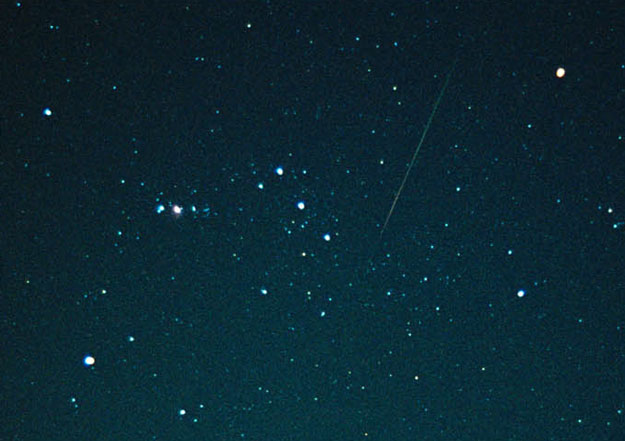Credit & Copyright: Doug Murray
Explanation:
The Leonid Meteor Shower this year could be
described as good but not great.
During November 17 and 18 the Earth crossed
through several streams of
sand-sized grit
left orbiting the Sun by
Comet Tempel-Tuttle.
Several distinct peaks in
meteor activity were reported,
with rates approaching 400 meteors per hour
for brief periods for some dark locations.
Pictured above, a
Leonid meteor was caught from
Florida
streaking through the
constellation of Orion
on the morning of 2000 November 18.
Visible as a red-tinged smudge to the left of the
three nearly linear stars that compose
Orion's belt is the picturesque star-forming region known as the
Orion Nebula.
Next year, the
Leonids Meteor Shower is expected
by many to be much more active.
1999 2000 2001 2002 2003 2004 2005 2006 2007 2008 2009 2010 2011 2012 2013 2014 2015 2016 2017 2018 2019 2020 2021 2022 2023 2024 2025 |
Yanvar' Fevral' Mart Aprel' Mai Iyun' Iyul' Avgust Sentyabr' Oktyabr' Noyabr' Dekabr' |
NASA Web Site Statements, Warnings, and Disclaimers
NASA Official: Jay Norris. Specific rights apply.
A service of: LHEA at NASA / GSFC
& Michigan Tech. U.
|
Publikacii s klyuchevymi slovami:
Leonidy - Meteor - Leonids - Orion - meteor
Publikacii so slovami: Leonidy - Meteor - Leonids - Orion - meteor | |
Sm. takzhe:
Vse publikacii na tu zhe temu >> | |
